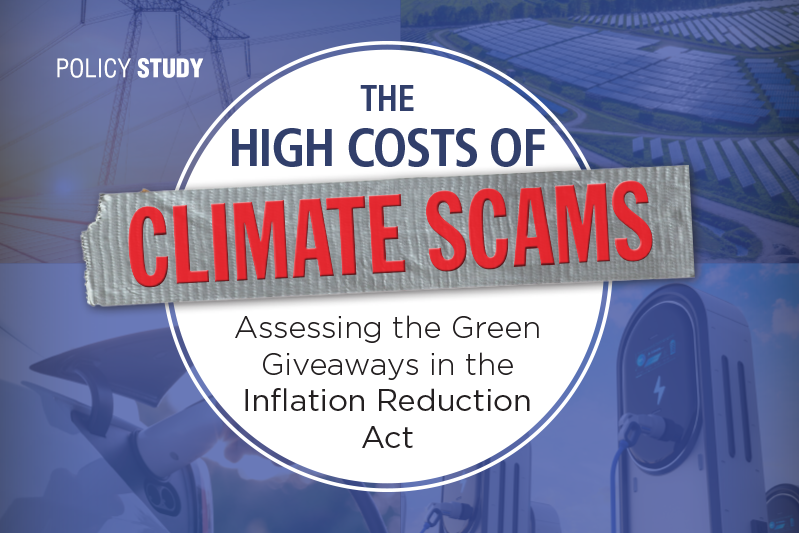The Carbon Brief (TCB) recently put an interactive web page online titled: Mapped: How climate change affects extreme weather around the world. However, the web page gives a false impression that TCB is using actual data showing how climate change is affecting severe weather. It is not. Instead, TCB relies heavily on so-called “attribution studies” which use climate model simulations and estimates. Output from climate models is not the same as actual data, which debunks TCB’s webpage.
TCB’s interactive feature page on attribution studies presents a comprehensive overview of “attribution” research linking climate change to extreme weather events. While the compilation is extensive, it is essential to approach such narratives with a critical eye, especially when considering the broader context of severe weather trends and the methodologies employed in these studies.
Attribution studies aim to determine the extent to which claimed human-induced climate change influences specific weather events. These studies often utilize climate models to compare real-world scenarios with hypothetical situations devoid of the models (modelers) assumed estimates of human impact. The reliability of these models is unverifiable and to the extent their outputs have been tested against real world data and historical events and trends, they have failed. As highlighted by Climate At A Glance, climate models have historically exhibited significant discrepancies when compared to observed temperature data, raising questions about their predictive accuracy.
Contrary to the prevalent narrative, empirical data does not support the claim that severe weather events are becoming more frequent or intense. For instance, Climate Realism points out that despite increased media coverage, data indicates no significant upward trend in the frequency or severity of hurricanes, tornadoes, or floods over the past several decades. As discussed in several Climate at a Glance papers, data shows floods, hurricanes, instances of extreme heat or cold, tornadoes, and wildfires have not increased over the past century, much less over the past 30 years. This strongly suggests that the perception of worsening weather may be more attributable to heightened awareness, reporting, and the mainstream media’s uncritical promotion of attribution studies themselves, rather than actual changes in weather patterns.
The perception of escalating severe weather is often amplified by media coverage and technological advancements. In a 2011 article on Watts Up With That, it was noted that the proliferation of instant communication tools and 24/7 news cycles has led to more immediate and widespread reporting of weather events. A follow up article in 2017, Reporting bias and the “increase” in weather events in the US, noted the same issues.
This increased visibility can create a false impression of rising frequency and severity, even when statistical data demonstrates no such trends.
Attribution studies rely on climate models to simulate scenarios with and without estimates of human influence. However, these models are inherently limited by the assumptions and parameters set by researchers. The main problem is that attribution models, and the studies generated using them, assume what they are attempting to prove. Attribution studies start with the assumption that for any extreme weather event being “modeled,” climate change has affected, impacted, or caused it, the only question being how much influence climate change has had. As discussed on Climate At A Glance, the fallibility of climate models is evident in their inability to accurately replicate observed climate patterns, casting doubt on their utility in attribution studies.
While TCB’s interactive page on attribution studies offers some insights into ongoing climate research, it’s important to discern that what they are presenting is not rooted in actual data, but in computer model output.
Actual empirical data does not support the narrative of increasing numbers of severe weather events or increasing severity of such events, and the methodologies employed in attribution studies have notable failures and bias. Moreover, the amplified media perception of worsening weather is often a byproduct of enhanced reporting capabilities rather than actual climatic changes. As such, TCB does a grave disservice to readers by not addressing these issues and limitations, and by falsely presenting model outcomes as fact.
























TCB is a propaganda organization that specializes in making everything worse than it seems! They’re pretty good at it and their gullible supporters just lap it up like thirsty dogs! They have no credibility whatsoever and anybody with a pulse knows what they’re doing! No different than a used car salesman selling you a sweet deal when really you’re getting a sour lemon! It used to be everything was pretty obvious but nowadays you have to hype, overstate and stretch the truth to get people to buy your snake oil! Nice try TCB but we’re not buying your BS!